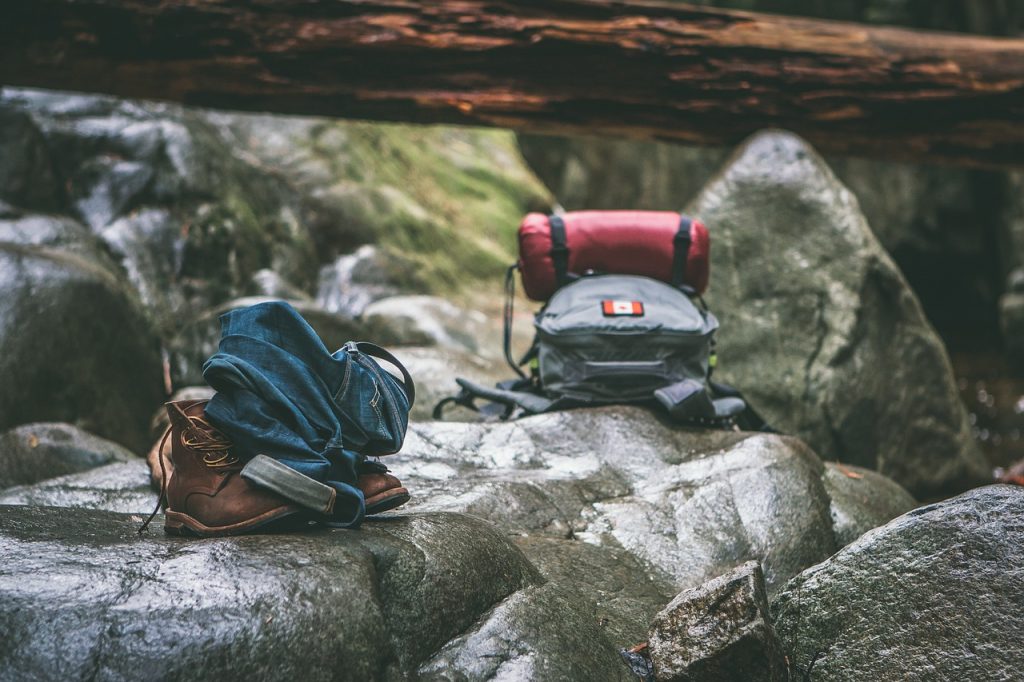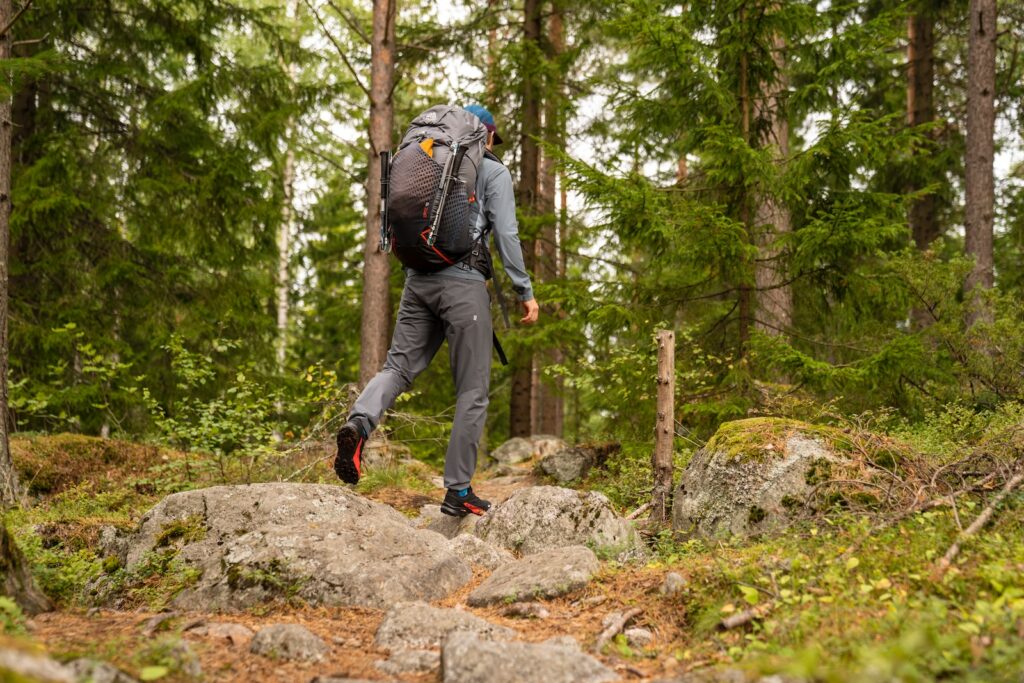

Decoding Switchbacks in Hiking: Their Purpose and How to Master Them ?
Welcome, adventurous hikers and outdoor enthusiasts! Have you ever found yourself trekking through a picturesque trail only to be faced with a steep ascent that seems never-ending? Fear not, for today we are diving into the world of switchbacks – those zigzagging wonders that seem to magically make mountains manageable.
Join us as we decode the purpose behind these winding trails and unlock the secrets to mastering them like a seasoned mountaineer. Get ready to conquer any peak with confidence and grace as we unravel the mysteries of switchbacks in hiking!
What Are Switchbacks?

A switchback is a zig-zag pattern used to ascend or descend a steep slope. It is the most efficient way to hike up or down a hill, and is often used on trails where the grade (angle of the slope) is too steep to hike directly up or down.
One of the most important things to remember when hiking switchbacks is to stay on the trail. It can be tempting to shortcut the turns, but this can damage the trail and cause erosion. Stick to the path – it may be longer, but it will be easier in the long run!
If you find yourself getting tired while hiking switchbacks, take a break. Sit down, have a snack, and enjoy the view. Don’t forget to hydrate, especially if it’s hot out. And when you’re ready to continue, take your time and go at your own pace. There’s no need to rush – you’ll get there eventually!
Why Use a Switchback?
A switchback is a zig-zag trail that is used to gain elevation in a short distance. It is an efficient way to hike up a steep hill or mountain. Switchbacks help hikers conserve energy because they can take shorter strides and rest often.
Switchbacks are often used on trails that are too steep to hike straight up. They can also be used to avoid obstacles, such as large rocks or trees. When hiking up a switchback, it is important to stay on the trail and not cut corners. Cutting corners can damage the trail and cause erosion.
How to Master Them When Hiking
Switchbacks are an essential part of hiking, whether you’re traversing a steep mountain trail or moderate incline. They help to reduce the impact on your body by breaking up the ascent, and make it possible to hike trails that would otherwise be too steep to manage. If you’re new to hiking, or have never given much thought to switchbacks, here’s a guide to understanding their purpose and how to master them.
A switchback is simply a section of trail where the path turns back on itself in order to gain elevation more gradually. This type of turns is often used on steeper terrain where it would be difficult to maintain a straight path. Switchbacks can be found all over the world on popular hiking trails, and range from gentle S-shaped curves to sharp hairpin turns.
The main purpose of switchbacks is to make the hike more manageable by breaking up the ascent. It’s much easier (and less taxing on your body) to hike a trail with several short sections of gradual elevation gain than it is to hike one long, uninterrupted slope. In addition, switchbacks help prevent soil erosion by allowing water run-off to dissipate more evenly across the trail surface.
When hiking a trail with switchbacks, there are a few things you can do to make the most of them:
– Take advantage of the opportunity for short rests. If you find yourself tiring as you hike uphill, use the flat portion of each switchback as an opportunity to take a short break. Take the time to catch your breath, rehydrate and refuel.
– Try to maintain a steady pace. Although it can be tempting to stop for long breaks at each switchback, it’s best to keep moving so you don’t lose momentum. If you need a breather, just take advantage of the flat spot on the trail before beginning the next section of elevation gain.
– Don’t get discouraged by the zig-zag path ahead of you. Remember that each switchback is only bringing you closer to your goal! Stay focused and determined, and eventually you’ll reach the top.
By taking these steps, you can make switchbacks easier to manage and enjoy the hike more fully. So next time you’re faced with a hilly trail, don’t forget these tips and remember that switchbacks are there for your benefit!
Types of Switchbacks

The most common type of switchback is the U-shaped turn. This is when the trail bends in a U shape, and you have to follow it up and around. These types of switchbacks are usually found on steeper terrain where the trail builders want to minimize the grade.
Another type of switchback is the J-shaped turn. This is less common, but you may come across it on occasion. With this type of switchback, the trail bends in a J shape instead of a U. This can be helpful on moderate grades where you want to maintain some forward momentum.
The last type of switchback is the S-shaped turn. This is the least common type, and it’s often found on very steep or difficult terrain. With this style of switchback, the trail zigzags back and forth, going up one side of a ridge before crossing over to the other side. This helps to minimize the grade even further and can make for a more challenging hike.
Benefits of Mastering a Switchback While Hiking
Switchbacks are an essential element of hiking, particularly when ascending a steep incline. They provide a more gradual ascent, which is easier on the legs and lungs, and also prevent hikers from getting too close to the edge of a cliff or drop-off. Mastering switchbacks can make hikes more enjoyable and efficient.
There are several benefits to mastering switchbacks while hiking:
1] They provide a more gradual ascent.
2] They prevent hikers from getting too close to the edge of a cliff or drop-off.
3] They can make hikes more enjoyable and efficient.
Examples of Different Types of Switchbacks
There are three main types of switchbacks: zigzag, spiral, and S-shaped. Each has its own purpose and challenges.
Zigzag switchbacks are the most common type. They are used to gain elevation quickly while still allowing hikers to maintain a relatively easy pace. The key to mastering zigzag switchbacks is to take them one at a time. Don’t try to shortcut the turns – this will just wear you out and slow you down in the long run.
Spiral switchbacks are less common, but they are often used in situations where the terrain is very steep. They can be more challenging than zigzag switchbacks because it can be difficult to maintain your footing on the turns. The key to mastering spiral switchbacks is to take them slowly and deliberately, using your hiking poles for stability if necessary.
S-shaped switchbacks are the least common type of switchback. They are typically only used in very unique situations, such as when there is a section of trail that is too narrow for a traditional zigzag or spiral pattern. S-shaped switchbacks can be tricky because it can be easy to lose your footing if you’re not careful. The key to mastering S-shaped switchbacks is to take them slowly and stay focused on your footing throughout the turns.
Safety Tips to Follow When Using Switchbacks in Hiking
When it comes to hiking, switchbacks are often seen as a necessary evil. They can be tiring, and sometimes it feels like you’re just going in circles. However, switchbacks are an important tool for managing elevation gain, and they can actually make your hike safer and more enjoyable if you know how to use them correctly.
Here are some safety tips to follow when using switchbacks on your next hike:
1] Pay attention to the trail markings. Switchbacks are usually well-marked on hiking trails, so pay close attention to the signs and blazes that indicate where the trail is going. This will help you stay on track and avoid getting lost.
2] Take your time. Switchbacks can be taxing, both physically and mentally. It’s important to take your time when hiking them, and to rest often if needed. Pushing yourself too hard on a switchback can lead to fatigue or injury.
3] Be aware of your surroundings. Because switchbacks tend to be located in steep terrain, it’s important to always be aware of your surroundings and be prepared for sudden changes in terrain or weather conditions. This includes being aware of potential hazards such as loose rocks or slippery surfaces.
4] Use proper footwear. Make sure you’re wearing sturdy, comfortable footwear when hiking switchbacks. This will help you maintain traction and balance on the trail, and will also protect your feet from any obstacles you may encounter along the way.
Conclusion
With a better understanding of what switchbacks are and how they’re used in trail design, you can now start enjoying the outdoors even more. Now, no matter if you are a seasoned hiker or just starting out on your outdoor adventure journey, you can tackle switchbacks with ease thanks to our helpful guide. The next time you encounter one of these tricky trails make sure to take advantage of the tips we provided here today so that you can power through them like an experienced hiker – good luck!






